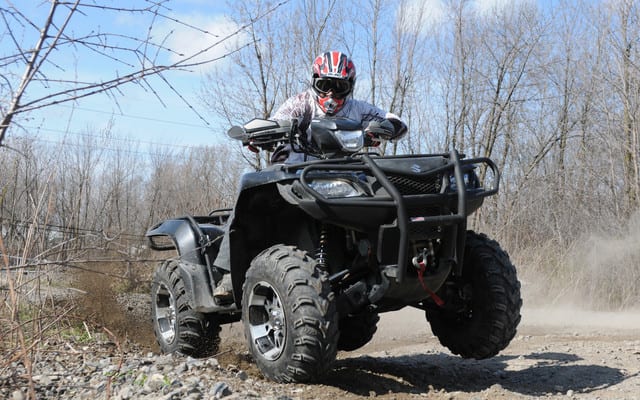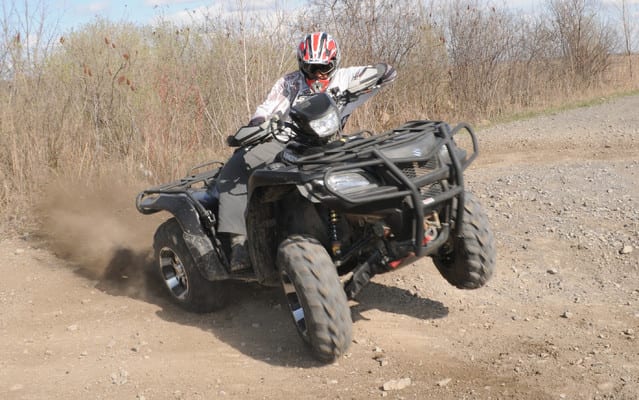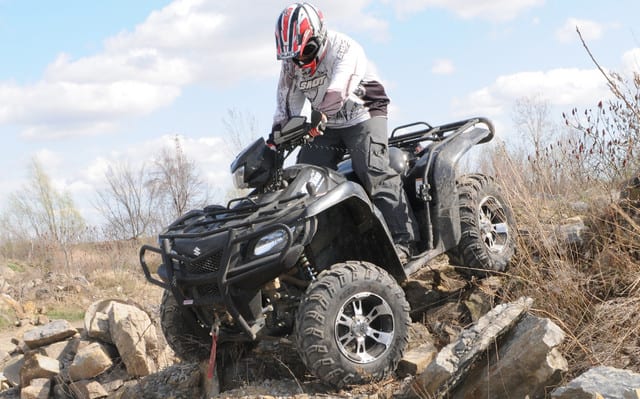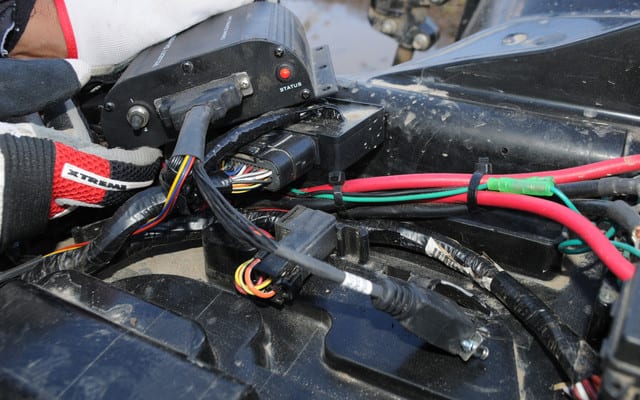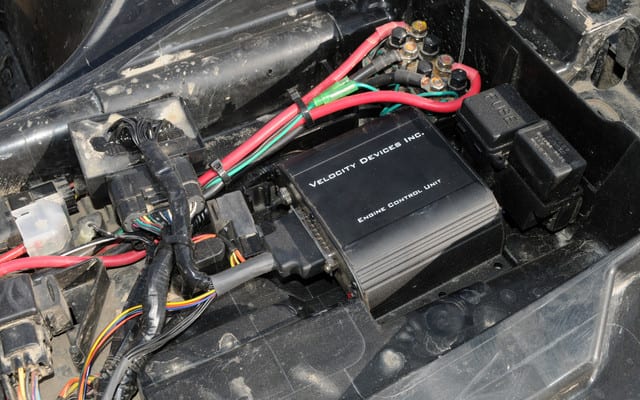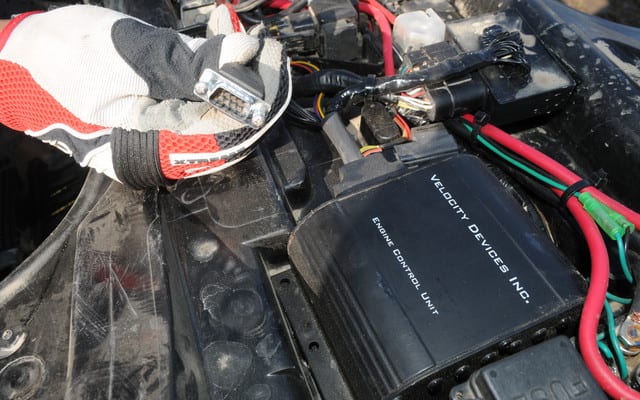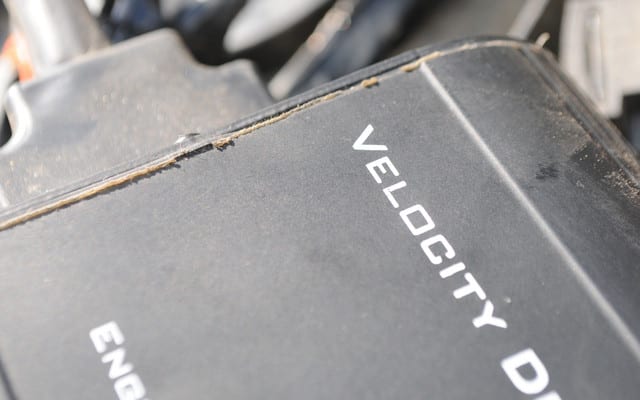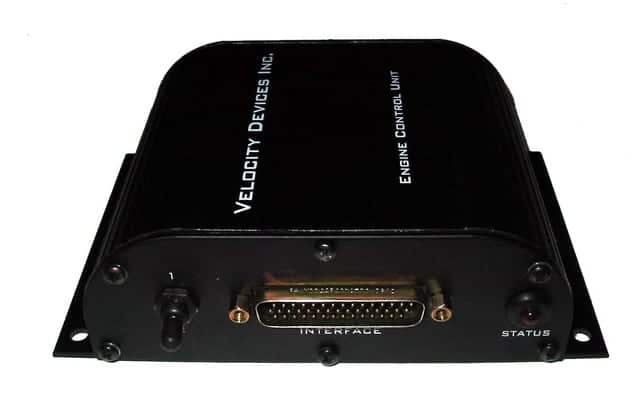At the beginning of the year, in the March-April issue of our magazine, we tested injection controllers. At the end of our article, we offered to propose an alternative . As the ATV Trail Rider team holds its promises, we intend to present you with a worthwhile electronic control system. We will evaluate and test the electronic engine control system known as the Copperhead from Velocity Devices Inc.
Velocity Devices Inc. is a Canadian company founded in March 2004, to answer the growing needs of utility ATV drivers looking to improve the performance of their vehicles. The objectives of this company were to conceive, develop and build a device capable of answering those consumers’ needs. Six years following the start of this adventure, V.D.I. has become a world leader in the manufacturing of this electronic engine control unit (ECU).
V.D.I has thus gone into action and proposes a very simple solution, by completely replacing the ECU unit on vehicles equipped with an electronic fuel injection system (EFI). Today’s highly advanced ATV vehicles use somewhat the same principle as can be found on cars, where all engine electronic components are controlled by a main electronic control system. One of the advantages of such a system is that it acts on much more than just fuel injection control. The Copperhead control system controls fuel injection, forward motion, engine temperature, by preventing overheating, fuel consumption, with a decrease of up to 25%, and can increase power by some 21%, from idle up to the red zone.
In theory, it is always easy to say, but in reality can one expect the promised results? With this in mind, I contacted Velocity Devices Inc. and within a few hours I obtained a very precise reply. I must confess that in my first email, I did not mention my true job identity, but rather identified myself as a potential customer with certain questions on their famous Copperhead ECU. As I write this article, the people at V.D.I. still ignore the fact that I have contacted them in the past, incognito, as one would say! It is very encouraging to realize that a potential customer is greeted with such professionalism and courtesy. A few weeks later, I, at last put in an order, this time stating my professional identity. Three days pass and to my great and pleasant surprise, I receive a well packaged box from Calgary, Alberta.
One of the major strong points about the V.D.I. Copperhead is that, as soon as your order is put in, your ECU will be programmed according to your ATV and its modifications, if the case applies. This little wonder will thus arrive at your door, ready to be installed. The number 1 program will allow the limiters on your ATV to remain active, i.e. your ATV will show better performance, but certain security items such as the back-up speed limit will remain functional. As you go on to the number 2 program, as the people from V.D.I. put it, your quad will be on fire! (in a figurative sense, of course). This number 2 program will liberate your ATV from all factory installed limiters. Of course, this option is to be used only if you have enough experience and must be utilized safely, please: no limiter on the back-up speed, no need to press this little button when stuck in mud up to your elbows and when you have to back up using the most power possible, in order not to get stuck 3 feet further.
It also works with the locked differential, as you can utilize the full power of your ATV. Furthermore, V.D.I. shows excellent technology mastery, by allowing you the possibility of upgrading your ECU with the use of a computer and an interface box available in their catalogue for the reasonable amount of $50. This way, if for any reason you decide to upgrade your ATV, you can get a download from V.D.I.’s website and reconfigure your quad. It is evident that technology is evolving at a tremendous pace and that V.D.I. holds a definite mastery in its field. V.D.I. is the only manufacturer in the world to propose a complete replacement of the electronic engine control system and not only a device paired to the original electronic control system.
By the way, I must admit I felt a certain amount of pride when I opened the box and found the maple leaf sticker with the “Made in Canada” inscription. Furthermore, V.D.I. also supplies 5 electric grounding connections, can be used to activate optional components, such as a tachometer connection and more. Before going any further, I feel it is now time to inform you of the cost of this concentrated technology gem and try it out to see what this innovation can contribute to the performance of your ATV. The people from V.D.I. have not gone overboard with the pricing. At $500 before taxes, the Copperhead offers flexibility and efficiency, which have a cost. Compared to other performance enhancing accessories, its price is very justifiable, especially if you consider the fact that this ECU device can be switched over to a new ATV, by just changing the wiring and reprogramming the lot. A list of available applications can be obtained through the V.D.I. website. Compared to the manufacturer’s price for an ECU, the Copperhead is in the same price range as some original ECU devices which can easily exceed this price of $500.
Installation
No engineer’s degree is necessary to install this device. Instructions with photos are clear and precise. After disconnecting the negative pole from the battery, the original ECU can be disconnected and replaced with the V.D.I. Copperhead. Depending on the type of ATV, one or two relays or components might have to be displaced. Included instructions will propose a certain type of installation, but it is possible to modify emplacement according to need. We had to solve such a problem in the course of our installation: the connection box for the winch added to our vehicle took up too much room under the seat and did not allow installation according to instructions. We had to make room by displacing a relay and by cutting into the plastic supports for the original ECU device. Complete installation was effected in about 30 minutes and, honestly, there was no need to be an expert in electrical wiring to do so. There is only a DB44 plug to connect, of the same type as the old printer connections. Another detail that we appreciated was the fact that this plug was filled with dielectric grease preventing corrosion and water infiltration.
Programming
If you modify your ATV after installation of the new ECU device, the V.D.I Copperhead can be adjusted according to a multitude of parameters. In order to proceed, the interface box offered in the V.D.I. catalogue is necessary. The rest is simple: connect the box to your computer and with the help of the available program from the V.D.I. website, you can proceed to all the necessary modifications. The Copperhead can even keep into account such details as the size of the tires. Once the data from your computer has been transferred to the interface box, this box can be disconnected and reconnected to the Copperhead and upgrading will occur by just turning the ignition switch on your ATV; in only one minute, all is done!
Who is this for?
A particular Copperhead characteristic I really appreciated was the fact that it is for everyone: its polyvalence allows it to adapt to the majority of ATV riders: whether you are a race pilot, a novice, an adept of family treks or a farmer, the V.D.I. Copperhead will certainly represent an advantage. The Copperhead’s limitations will be your own. If you are a pure performance fan and if you feel comfortable with electronic engine parameters, the Copperhead is a must. If you have no experience with such devices, the V.D.I. people will have you fill in a questionnaire when you put in your order, and will program your ECU according to the specifications of your ATV and your demands. Furthermore, if you are not comfortable with installation, a certified mechanic will have no difficulty doing it for you.
Trail tests
In order to evaluate the Copperhead’s performance, the same ATV will be used as for the tests we have run on the injection controllers. The same King Quad 700 will be used, without the original injection controller, which will end up on a shelf, while the Copperhead will be placed under the seat. I can already say that my expectancies are quite high, as I hope so much technology hidden away in such a small box will not be a disappointment once the tests are concluded. Being an adept of sport driving, I choose position number 2 on the Copperhead’s mode switch, which is geared for performance. I start up the KingQuad, which seems set like a Swiss watch, idle being well adjusted and, after warm-up, all that can be heard is a rich purr.
I saddle up and I’m off. I head toward the spot where I usually tune ATVs, a small very familiar trail that will allow me to evaluate the ATV’s engine responsiveness and pickup. In order to reach the trail, I must roll on asphalt for a while and, immediately, I notice a big difference: the King runs as though the large one cylinder engine has been replaced with a V-twin; the front wheels came off the ground, truly it’s as if the V.D.I. Copperhead has liberated the King from a certainly voluntary restriction imposed by the manufacturer. After a few runs on this trail that is now too small to my taste, I contact Alain, our Editor-in-chief, to propose a meeting with the team, so that we cast test and evaluate the Copperhead equipped KingQuad on a more adequate trail. A meeting is set and I think everyone is anxious to see how this transformed ATV will do in terms of performance and obstacle conquering. Without a differential limiter, we should be able to go into terrain we would have never have thought of tackling earlier.
On this second test, the trail choice is more appropriate, as we go to an area where all conditions are present: there is a gravel trail which allows for speed, with several hair-pin turns, rock walls to test conquering capabilities and large mud pools where a hippo could swim. Our objective is very simple, as on this day we are going for the limit, because we absolutely want to test the Copperhead in extreme conditions, in order to evaluate the gain in power and appreciate the advantages of the device.
This time, weather conditions are favourable; the sky is blue, and the temperature is perfect, without humidity in the air. I am the first to climb aboard the ATV, off to a slow start, and after a few minutes I push the accelerator more and more, to the max. The result is as clear as spring water, the Copperhead has completely transformed the KingQuad, engine pickups are powerful and clear, I feel no dead time in acceleration. The engine allows for surprising and constant lap times. Tight turns are a breeze and power slides are easy without worrying about power loss. After many laps on the course, I come to the conclusion that the Copperhead can deliver the goods in terms of power, and even surpass expectations!
After a short break to give my arms a rest, I get ready to attack the rocky portion of the trail. Some people think that performance parts are of no interest to improve conquering capabilities. As far as I’m concerned, I don’t agree: it is very dangerous to miss out on power when your ATV is almost in a vertical position, when it is too late to come back on your decision and you must absolutely pass over an imposing obstacle. In my humble opinion, it is easier to control the power of a vehicle when you have experience and to conquer obstacles while dosing acceleration. However, if power is lacking, you are risking putting yourself in a bad position, which might cause a fall and injuries, even when moving at a snail’s pace. So, I start the ascension, I hear rocks scraping on the protective plate under the KingQuad, but everything turns out right, the accelerator’s response is good and easy to manage in spite of the added power of our quad, provided by the Copperhead.
I can remain in control, a small pressure on the gas before a large rock and the wheels quickly overrun it. It was also good to have the V.D.I. Copperhead under the seat, for the engine temperature remains constant without overheating. I even wondered for an instant if the cooling fan was functioning appropriately, because I never heard it turn on during the steep rock ascension. I take a look at the temperature gauge we installed for the injection controllers’ test we mentioned in the March-April 2010 issue of the magazine, and everything is perfect. Once again, I must admit that the addition of such an option was a judicious and very inexpensive choice, because being aware of the engine’s temperature is necessary when modifications are made on an ATV.
Another characteristic of the Copperhead is that it is waterproof. The Copperhead can be very useful to those who like to play in mud or to those who think of an ATV as a submarine, and install air intakes in the form of a periscope, especially if their vehicle is high off the ground such as when their tires are oversized. I decide to play the game and see if, once caught in the mud, the fact of having no limiter on the differential will be helpful to me. Well yes, I did not get stuck because of the fact I could use more power when the differential was locked and the limiter was inactive, an asset I truly appreciated.
It is now Alain’s turn to get on board the KingQuad. Those who have had the privilege to ride with him know that, as much as he appreciates quiet family rides from time to time, when he decides to push a vehicle to the maximum of its capabilities, he goes right at it! (with safety and in a controlled environment, of course). Right away, he pushes the KingQuad hard, executing successive turns in perfect control of slides, at each bump he turns on the gas and clears it without the front wheels touching the ground. We now come up to a monstrous mud pool, as I follow aboard another ATV, and to be honest I try in every way to avoid these mud pits,, for fear of getting stuck up to my ears! Alain has no intention to be impressed and he dives right into what I call “hippo baths”, the KingQuad seems to show some hesitation, but Alain has more than one trick up his sleeve and a lot of experience behind the steering: he locks the differential, accelerates and moves his body so that the traction of the quad is increased, and succeeds at clearing these holes on every occasion, without ever having to use the winch.
At the end of this day, we all agreed, the V.D.I. Copperhead ECU had greatly impressed us. As far as I was concerned, I must say I was afraid to be disappointed, but on the contrary, the Copperhead surprised in a pleasant way and this, on all counts. Even the Air/Fuel ratio we measured was perfect (constantly between 12 and 13 AFR, AFR being the unit measuring the Air/Fuel ratio). This famous ratio was hard to obtain during our tests on the injection controllers.
The verdict
We ascertain that V.D.I. has done a remarkable job at developing such a product as the Copperhead. Furthermore, through our navigations on Internet, we witnessed an impressive level of satisfaction from their customers. Many discussion forums vouch for the fact that the key to success is linked to customer service. In most discussions quoted on the Net, the name Lyle was often mentioned, especially when it came to his commitment to customer service. Well, Ladies and Gentlemen. I must inform you that Lyle is no other than the owner and founder of V.D.I. Without hesitation, a score of 110% goes to the Copperhead and we encourage the people at V.D.I. to continue on the same path and also invite you to visit their website at www.velocitydevices.com. Many other products are also offered, such as a relocation air sensor kit (IAT/ Intake Air Temperature), which we will try out shortly, for sure. Clutch kits and other products are also offered. The Copperhead is available for many ATVs and even for certain Side by Sides.
Here is a list of ATVs and Side by Sides compatible with the Copperhead:
Carbureted models :
- Arctic Cat V650 as of 2004
- Kawasaki V-Force as of 2004
- Kawasaki Brute Force as of 2005
- Kawasaki KVF/Prairie as of 2002
- Suzuki Twin peaks 700 as of 2004
- Yamaha Grizzly 660 from 2002 to 2007
- Yamaha Rhino 660 from 2004 to 2006
Fuel Injected models:
- Arctic Cat 700 EFI as of 2006
- Kawasaki Brute Force 750 EFI as of 2008
- Kawasaki Teryx 750 EFI as of 2009
- Suzuki KingQuad 700 EFI from 2005 to 2007
- Suzuki KingQuad 450 EFI as of 2006
- Suzuki KingQuad 750 EFI as of 2008
- Yamaha Grizzly 700 EFI as of 2007
- Yamaha Rhino 700 EFI as of 2008


